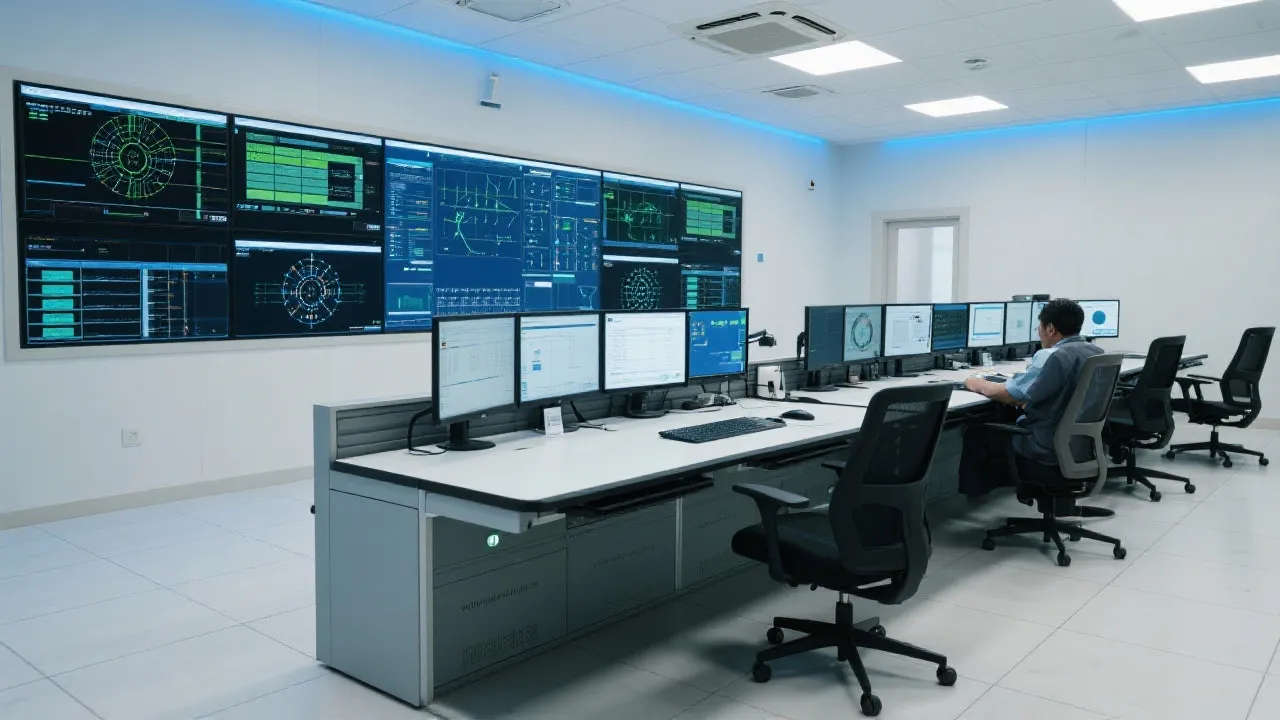IHM SCADA systems represent a cornerstone in industrial automation, focusing on supervisory control and data acquisition across diverse sectors. These systems are designed to monitor, control, and optimize industrial operations, enhancing operational efficiency. Their role in industrial settings includes real-time data processing, system control, and remote accessibility, ensuring streamlined operations and timely decision-making.

In the rapidly evolving landscape of industrial automation, IHM SCADA (Supervisory Control and Data Acquisition) systems serve as a pivotal component that ensures efficient, safe, and reliable operations. These systems are employed across various sectors, including manufacturing, energy, water management, and more. The primary function of IHM SCADA systems is to gather real-time data from multiple sources, analyze and process this data, and finally help in making informed decisions to enhance productivity and reduce operational risks. The evolution of IHM SCADA systems reflects technological advancements and tackles the growing demands of industries looking for more integrated and smarter solutions. As organizations strive for increased automation, SCADA systems have transformed from simple monitoring systems to complex platforms that incorporate advanced analytics, machine learning, and even artificial intelligence, thereby significantly enhancing their functional capabilities.
At the heart of IHM SCADA systems are sensors, Remote Terminal Units (RTUs), Programmable Logic Controllers (PLCs), and Human Machine Interfaces (HMIs). These components work in synergy to perform critical functions:
Furthermore, IHM SCADA systems can now incorporate cloud computing, enhancing data accessibility and providing remote monitoring capabilities. This advancement allows operators to access real-time insights from anywhere, enabling quicker and more informed decision-making processes. By employing advanced algorithms, SCADA systems can analyze incoming data to identify patterns and generate predictive alerts, contributing to smarter and more responsive industrial environments.
Integrating IHM SCADA systems into industrial operations yields numerous benefits:
Let us consider an industrial water treatment facility using IHM SCADA systems. The system monitors water levels, flow rates, and quality parameters in real-time. This setup ensures that water treatment processes are operating efficiently and within regulatory standards, while also providing alerts for any potential breaches in safety. The system not only tracks data related to water quality but can also connect with chemical dosing systems to automatically adjust treatments based on the quality metrics being gathered. As a result, the facility maintains high operational standards with minimized environmental impact, while also significantly reducing labor costs associated with manual monitoring and adjustments. Furthermore, by documenting historical data, the facility can track the efficacy of treatment processes over time, making it easier to optimize procedures and comply with stringent environmental regulations.
Another example can be seen in the energy sector, where an electric utility company employs a SCADA system to oversee and manage its grid. In this case, the SCADA system enables real-time monitoring of energy flows, transformer loads, and circuit statuses. Any fluctuations can signal power surges or outages, prompting immediate corrective actions that help maintain a stable energy supply. With remote control capabilities, technicians can isolate problems, reroute power, and even initiate recovery protocols without the need for physical intervention, thereby enhancing overall reliability and responsiveness.
Implementing IHM SCADA systems requires strategic planning and an understanding of the specific industrial processes involved. Key considerations include:
| SCADA Solution | Features | Applications |
|---|---|---|
| Solution A | Real-time monitoring, predictive maintenance, mobile accessibility | Manufacturing, Utilities, Energy |
| Solution B | Highly scalable, robust security, cross-platform integration | Water Management, Oil & Gas |
| Solution C | User-friendly interface, historical data analysis, remote alerts | Telecommunications, Transportation |
| Solution D | Cloud-based architecture, flexible licensing, comprehensive analytics | Pharmaceuticals, Food and Beverage |
| Solution E | Open-source platform, customizable features, community support | Smart Buildings, Research Facilities |
What stands out about these solutions is their adaptability to different industry needs. Businesses can select or design SCADA systems tailored to their specific operations, making SCADA a versatile choice across sectors. As industries evolve, solutions also continue to incorporate new technologies such as the Internet of Things (IoT) and advanced analytics, ensuring that IHM SCADA systems remain at the forefront of Industrial Automation innovation.
In conclusion, the significance of IHM SCADA systems in the realm of industrial automation cannot be overstated. As industries continue to adopt more sophisticated technologies, the role of SCADA will evolve, offering invaluable insights, safety improvements, and operational efficiencies. By leveraging the full potential of SCADA systems, organizations can enhance their competitive edge in a rapidly transforming industrial landscape.
Explore the Tranquil Bliss of Idyllic Rural Retreats

Ultimate Countdown: The 20 Very Legendary Gaming Consoles Ever!

Affordable Full Mouth Dental Implants Near You

Discovering Springdale Estates

Embark on Effortless Adventures: Unveiling the Top in Adventures Made Easy Outdoor Equipment

Unlock the Full Potential of Your RAM 1500: Master the Art of Efficient Towing!

Dodge Ram: Redefining the Future of Full-Size Trucks with Unmatched Power and Innovation

Get New Phones Without Plans Easily

Smart Strategies to Slash Costs on Your Roof Replacement Endeavor
